
123rf.com (Varin Rattanabu)ri
Unless you’re a serious gamer or someone who seriously pushes your PC to the limit with tasks like video editing or graphic design, you probably wouldn’t seriously consider a laptop with an Intel Core i9 processor. The fastest consumer CPU available, the i9 is also priced with a premium. Honestly, an Intel Core i7 CPU offers a much better price/performance ratio. The i9 is the best, but you pay for it.
And yes, you get a lot of performance. Most Core i9 CPUs deliver 8 cores and 16 threads, and a clock speed that ranges from 2.3GHz to 2.9 GHz, depending on the chip. That adds up to a lot of multi-threaded performance for applications that can take advantage of multi-threading and smooths out your performance when you multitask critical apps, such as if you stream gaming footage online as you play, or edit and render graphics simultaneously. An i9 laptop would be a decadent accessory for editing and managing a photo workflow from a DSLR camera or even an advanced point & shoot camera.
There are a lot of laptops equipped with Core i9 CPUs — so which one is right for you? To some degree, it’s an embarrassment of riches, because all i9 PCs are fairly generously equipped with high-end hardware befitting their status at the top of the food chain. But they all have their pros and cons, so read on for an assessment of the top 11 i9 laptops, and which ones I recommend.
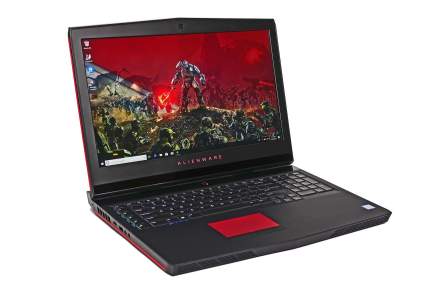
|
Amazon Customer Reviews
|
Price: $4,980.00 Shop at Amazon | Shop now Read our review |
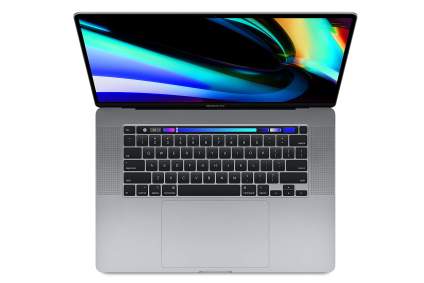
|
Amazon Customer Reviews
|
Price: $2,799.00 Shop at Amazon | Shop now Read our review |

|
Amazon Customer Reviews
|
Price: $3,199.99 Shop at Amazon | Shop now Read our review |
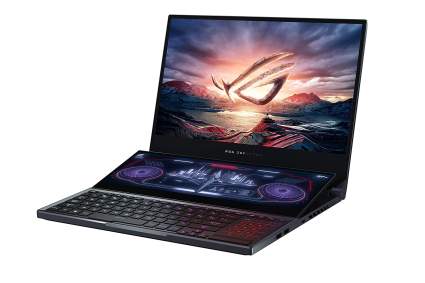
|
Amazon Customer Reviews
|
Price: $2,886.51 Shop at Amazon | Shop now Read our review |
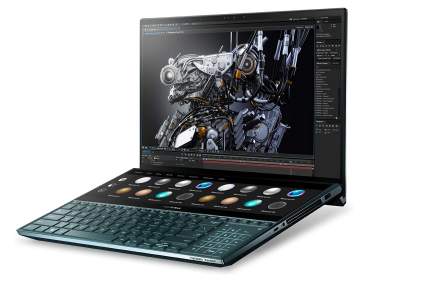
|
Amazon Customer Reviews
|
Price: $5,598.00 Shop at Amazon | Shop now Read our review |
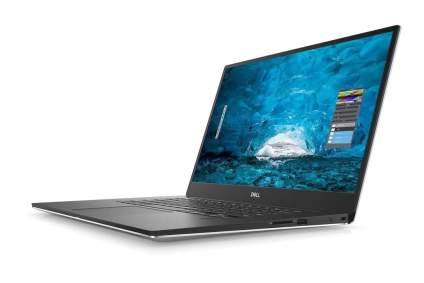
|
Amazon Customer Reviews
|
Price: $3,999.22 Shop at Amazon | Shop now Read our review |
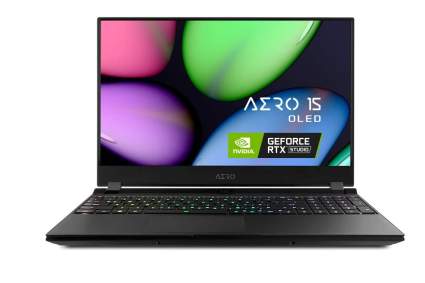
|
Amazon Customer Reviews
|
Price: $2,283.08 Shop at Amazon | Shop now Read our review |

|
Amazon Customer Reviews
|
Price: $2,897.77 Shop at Amazon | Shop now Read our review |
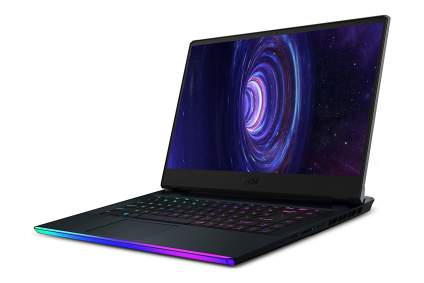
|
Amazon Customer Reviews
|
Price: $1,499.99 Shop at Amazon | Shop now Read our review |
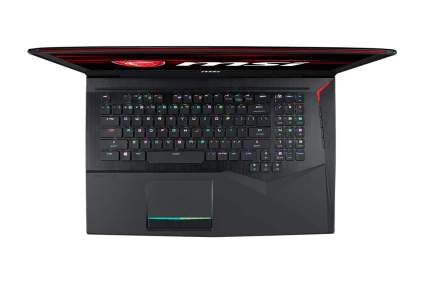
|
Amazon Customer Reviews
|
Price: $3,029.00 Shop at Amazon | Shop now Read our review |
-
1. Alienware 17 R5
Pros:- Large 17.3-inch QHD display
- Tobii eye-tracking
- Hinge-forward design
Cons:- Very heavy 9.7-pound beast
- GeForce GTX 1080 rather than an RTX 2080
- Not a 4K display
Processor Intel Core i9-8950HK | RAM 32GB | Display 17.3 inches | GPU Nvidia GeForce GTX 1080 | Hard drive 512GB SSD, 1TB HDD | Dimensions 16.7 x 13.1 x 1.2 inches | Weight 9.7 pounds
Alienware doesn’t do anything halfway, and the Alienware 17 R5 is a massive portable laptop that you could easily use to replace a desktop, with both the specifications and heft to convince you it means business. This particular configuration is powered by an Intel Core i9-8950HK, which you can overclock up to 5GHzif you so choose. It has a massive 32GB of RAM and storage is handled by a 512GB SSD and 1TB hard drive.
The first thing you really see when you open the case, though, is a 17.3-inch QHD (that’s 2560×1440-pixel) display. It’s running at a fast 120Hz with Nvidia G-Sync to keep graphics in your games from tearing and bleeding. I don’t usually talk about screen brightness, because there often isn’t a huge variance in displays, but this one produces 400 nits, noticeably brighter than the 300 or so nits you’ll find in most laptops. The only real disappointment is the video card — an Nvidia GeForce 1080.
Making up for that, though, is a special treat Alienware has been including with certain high-performance models: Tobii eye-tracking. Not only can you use the Tobii camera to log in with facial recognition, Tobii eye-tracking works in around 100 games, letting you interact with the game just by looking. Want to select an object? Stare at it. It adds a whole different dimension to gameplay.
The laptop itself is a beast. The hinge-forward design puts a huge brick-shaped segment of the machine behind the screen, which means the display is closer to the keyboard — a nice ergonomic touch — and there’s room to put a lot of the ports in back, out of the way. You’ll find a single USB on the right side along with audio (for a nice set of noise-cancelling earbuds) and a USB and USB-C connector on the left. In back, though, you’ll find everything else — Ethernet, DisplayPort, HDMI, another USB-C, and more. Alienware includes a connector for its Alienware Graphics Adapter, which is an external enclosure for adding a desktop-class video card. Want to upgrade to an Nvidia GeForce 2080? You can do that with this laptop.
This is by no means an inexpensive laptop, and Alienware isn’t modest about the system’s premium heritage. It has a ton of RGB color accents (13, specifically) and per-key RGB lighting. Even the touchscreen lights up, which is a great touch. All this comes at a cost, though — the system weighs an imposing 9.7 pounds. So you might not want to travel with it very often. If you’re going all-in on a system like this but never leave the house, consider a similarly equipped desktop PC instead, like a Ryzen 9-powered PC, which will actually cost less than a similar laptop.
-
2. Apple MacBook Pro
Pros:- The best performing MacBook Pro
- Improved keyboard
- Gorgeous Retina display
Cons:- Expensive
- Might run low on USB-C ports
- No touchpad
Processor Intel Core i9 | RAM 16GB | Display 16 inches | GPU AMD Radeon Pro 5500M | Hard drive 1TB SSD | Dimensions 9.7 x 14.1 x .6 inches | Weight 4.3 pounds
When a new laptop comes out. its keyboard is rarely the lead story (though arguably, perhaps it should be, given how important it is), but when it comes to the new 16-inch Apple MacBook Pro, it seems all anyone can talk about is the new keyboard. That says more about the keyboard it’s replacing, actually. Last year’s butterfly keyboard as abysmal and people hated it. But the new keyboard uses tried-and-true scissor switches and is a welcome improvement. Not surprisingly, the laptop also includes Apple’s Touch Bar, which puts common and favorite commands right at your fingertips.
Keyboard aside, this is perhaps the best MacBook that Apple has ever released. It has an 8-core, 8th generation Intel Core i9 CPU, of course, along with 16GB of RAM and 1TB SSD for storage — putting it in the same class as the best 16GB Windows-based laptops. It features a 16-inch display powered by an AMD Radeon pro 5000M GPU, meaning this system is beefy enough for intensive video-editing and graphics work. The resolution is a formidable 3072 x 1920 pixels, with a Retina-quality 226 pixels per inch. And even though the screen is an inch larger (on the diagonal) than last year’s 15-inch MacBook, the laptop itself is roughly the same size thanks to a much smaller bezel. It’s also perhaps the brightness laptop screen you’re likely to find at 500 nits.
It’s also worth calling out the MacBook Pro’s excellent audio. A massive six speakers generate an impressive wall of sound, but a pair of “force-canceling” woofers produce a lot of bass without creating much vibration. It also includes an array of three microphones for food quality audio without adding an external mic.
Finally, you get four Thunderbolt 3 USB-C ports, Wi-Fi, and Bluetooth. And it all weighs just over 4 pounds. This is an excellent laptop for any creative professional, or students in a demanding creative curriculum.
-
3. ASUS ROG Strix Scar 17
Pros:- Gorgeous 300Hz display
- 512GB SSD
- Keystone encrypted stoage
Cons:- Heavy
- No 4K
- Pricey
Processor Intel Core i9-10980HK | RAM 16GB | Display 17.3 inches | GPU Nvidia GeForce RTX 2080 Super | Hard drive 512GB | Dimensions 14.2 x 10.8 x .8 inches | Weight 5.7 pounds
When you’re in the stratospheric realm of laptops that are priced north of $2,500, you need to do some things that distinguish yourself. The ASUS ROG Strix Scar 17 tries to do this not with a lot of flashy (or even gimmicky) features, but with a solid, meticulously built laptop that is packed with performance. Start with the display: this 17.3-inch panel (running a FHD 1920 x 1080-pixel display) has a massive 300Hz refresh rate, which is well in excess of what most gamers should need. It’s powered by an Nvidia GeForce RTX 2080 Super, which is currently as fast as they come.
The laptop itself is fitted with an Intel Core i9-10980HK and 16GB RAM, and storage is a spacious 512GB SSD. The keyboard features full per-key RGB lighting, and the Scar has Asus’s Keystone II, which is an NFC-enabled key that fits in a slot on the side of the chassis. The keystone can be used to store personalized settings, quick-launch apps, or even serve as an encrypted shadow drive. Thankfully, Asus keeps all the ports off the right side of the laptop to avoid getting in the way of the mouse. Thanks to a hinge-forward design, there’s a lot of room for ports in back, and there you’ll find a USB 3.0 port, USB-C, Ethernet, HDMI, and an audio port, with two more USB 3.0 ports on the left.
There’s no webcam here — a surprising oversight for a laptop priced this high — but you can always add a webcam, especially if you want to use it for streaming to services like Twitch or YouTube.
Find more ASUS ROG Strix Scar 17 information and reviews here.
-
4. ASUS ROG Zephyrus Duo
Pros:- 4K UHD display
- Second screen
- Large 2TB SSD
Cons:- Touchpad may be inconveniently placed
- USB ports on right side of laptop
- Very expensive
Processor Intel Core i9-10980HK | RAM 32GB | Display 15.6 inches | GPU Nvidia GeForce RTX 2080 Super | Hard drive 1 TB SSD X 2 (RAID 0) | Dimensions 14.2 x 10.8 x .8 inches | Weight 5.3 pounds
The ASUS ROG Zephyrus Duo is something special, and the key to its uniqueness is right in the name. Called the Duo, this Zephyrus packs a second screen between the keyboard and main display. The result is a laptop that’s part pure gamer envy, part utility, part science fiction. And it has a price tag to match.
When you open the lid on this Zephyrus Duo, the second display — which measures a sharp 3840×1100 pixels — rises up to a convenient viewing angle (simultaneously opening an air intake for additional cooling). The second display can be used for anything you like, but I suspect it’ll see a lot of use with gamers for displaying inventories, maps, and perhaps YouTube or Discord while the game plays in the main display. For creatives, the second display is a great place for toolbars and palettes. It’s touch- and stylus- compatible as well. This isn’t the first laptop to boast a second display, but it is the first one I’ve seen that angles it to a comfortable viewing angle, and that makes a world of difference.
This model is powered by an Intel Core i9-10980HK and 32GB RAM, and has a 2TB SSD (actually, a pair of 1TB drives bound together with RAID 0 for ultra-fast performance. The speed is appreciated, but be sure you have a dependable backup, since a failure of either drive will destroy all your data. The 15.6-inch display is a full 4K UHD screen running 3840×2160 pixels. Not only is it equipped with Nvidia G-Sync for gamers, but creatives will appreciate the Pantone-calibrated display.
The large comfortable keyboard is accompanied by a right-leaning touchpad. Honestly, this is a love-it-or-hate-it configuration; many people find the touchpad inconvenient and awkward, but you may also grow to love it positioned on the right side of the chassis, where it can be programmed to function as a full number pad.
Unfortunately, Asus places some ports on the right side where cables are likely to foul your mouse operations — there are a pair of USB 3.0 and USB-C ports there. You’ll find audio and power on the left, and Ethernet, HDMI, and another USB 3.0 in back.
Find more ASUS ROG Zephyrus Duo information and reviews here.
-
5. Asus ZenBook Pro Duo UX581
Pros:- Secondary display
- 4K UHD touchscreen
- Touchpad doubles as number pad
Cons:- Second screen lies flat
- No Ethernet
- Right side ports can get in way of the mouse
Processor Intel Core i9-9980HK | RAM 32GB | Display 15.6 inches | GPU Nvidia GeForce RTX 2060 Super | Hard drive 1 TB SSD | Dimensions 14.1 x 9.7 x .9 inches | Weight 5.5 pounds
Like its more technologically adventurous cousin the ROG Zephyrus Duo 15, this Asus ZenBook Pro Duo sports a dual display. And by most reasonable measures, this is a powerhouse laptop. Built on the foundation of an Intel Core i9-9980HK and 32GB RAM, it as a large 1TB SSD for storage and the screen is backed with an Nvidia GeForce RTX 2060 Super. And the 15.6-inch display goes above and beyond — it’s not only a 4K UHD display running 3840 x 2160 pixels, but it’s a touchscreen as well — not something you see a lot in laptops of this class. The secondary screen — which Asus calls the ScreenPad Plus — is a 3840 x 1100 display, also a touchpad. And it comes with its own stylus, if you care to use it.
In front of the ScreenPad Plus, you’ll find a nicely clicky keyboard and a touchpad on the right side of the case. It’s an unusual place for a touchpad and one you may need to warm up to, but its position there has some advantages. It does double duty as a number pad, for example, which is super handy, and there’sa a good chance you won’t use the touchpad at all, in which case getting it out of the way of the keyboard is a good thing.
There are a few other cool features — like the way the screen opens so that the hinge turns into a leg that elevates the rear of the laptop for both ergonomics and cooling. And the ZenBook comes with a Windows Hello-compatible camera, so you can sign into Windows with face recognition.
But because of the way the screen hinges, there are no ports back there — everything is on the sides. The right side holds a USB-C and USB 3.0 port along with audio, and the flip side has HDMI and USB 3.0. There’s no Ethernet, which is a serious deficiency in a $3,000 laptop.
Find more Asus ZenBook Pro Duo UX581 information and reviews here.
-
6. Dell XPS 15 9570
Pros:- Thin and light
- 4K touchscreen
- integrated SD card slot
Cons:- Bland styling
- Limited ports and connectors
- Webcam looks up your nose
Processor Intel Core i9-8950HK | RAM 32GB | Display 15.6 inches | GPU NVIDIA GTX 1050Ti | Hard drive 1 TB SSD | Dimensions 14.1 x 9.3 x .7 inches | Weight 4.5 pounds
A lot of the i9 laptops on the market are focused on gamers. After all, they’re probably the biggest market segment for so-fast-it’s-surprising-it’s not -on-fire laptops. After that, there’s a large population of creators looking for the fastest PCs to do graphics and video work. But if you are just looking for heaps of performance because you want the fastest machine for a wide array of productivity tasks, you might lean towards a brand like Dell. Dell knows how to make a serious laptop, but doesn’t dress it up with a lot of gimmicks or edgy aesthetics. And that describes the Dell XPS 15 9570 pretty well. It’sd a fast PC, but makes some compromises to clock in as a thin-and-light system that can be an all-around workhorse.
The Dell XPS 15 9570 runs the 8th Gen Intel i9-8950HK with 32GB RAM, so it’s built for speed. But Dell also built it around a gorgeous 15.6-inch 4K UHD touchscreen display (pushing out 3840 x 2160 pixels), driven by a GeForce GTX 1050Ti. The video card is no slouch, but by pulling back from the bleeding edge 2080 Super, Dell is saving you a little cash and helping the system to run a bit cooler.
This is an especially thin and light laptop by i9 standards; it’s just ,7-inches thick, and even so Dell supplies a minimum array of ports and connectors: You get a USB 3.0 and SD card slot on the right side and another USB 3.0 and a USB-C on the left, along with one HDMI. An Ethernet port is simply too much to ask on a system this thin, though. If you’re looking to wow people with your bleeding-edge i9 laptop, though, keep looking. The styling of this Dell can charitably be called conservative; more accurately, you could say it’s a bit dated and bland. And Dell really needs to give this machine an overhaul, fixing some of the weirder design decisions like putting the webcam, below the display — in video calls, it’s essentially looking up your nose.
-
7. Gigabyte AERO 15
Pros:- 4K OLED display
- Per-key RGB lighting
- Microsoft Azure machine learning
Cons:- Webcam below the display
- The GPU is comparatively slow
- Camera doesn't do face recognition
Processor Intel Core i9-10980HK | RAM 32GB | Display 15.6 inches | GPU NVIDIA GeForce RTX 2070 Super Max-Q | Hard drive 1 TB SSD | Dimensions 14 x 9.8 x .8 inches | Weight 4.6 pounds
4K displays are becoming more common in laptops — especially among high-end portables like those running an i9 processor. But the Gigabyte AERO 15 has something few others can claim. This is one of those rare laptops that features not just a 4K display, but an OLED screen. You don’t see a lot of OLEDs yet — though they’re getting more common — so having an OLED display is a conversation starter for sure. And it’s more than that; the display is gorgeous across all 3840 x 2160 pixels, with bright and accurate color. Because of the way OLED displays work, you don’t need to worry about pixel lag which is great, because that’s one of the last remaining shortcomings among IPS displays. This screen is also X-Rite Pantone certified for collar accuracy at the factory, arriving pre-calibrated.
The AERO is relatively thin and light, measuring just .8-inches thick, which explains the inclusion of the RTX 2070 Max-Q GPU, but the system still includes an Intel Core i9-10980HK CPU and 32GB of RAM. You get a full 1TB SSD for storage, and there’s a free slot inside the case for adding a second drive if you like.
Gigabyte includes three USB 3.0 ports, a USB-C, Ethernet, and HDMI. Unfortunately, Gigabyte has integrated the webcam below the screen, so your video callers will spend a lot of time looking at the bottom of your nose. Because this laptop has a focus on gaming, the keyboard has per-key RGB color, and a pair of downward-firing speakers deliver great audio. The system also includes Microsoft’s Azure AI, which Gigabyte leverages to describe this as the world’s first “AI laptop.” Specifically, it works by passing user preference data through the Microsoft Azure Machine Learning platform in order to dynamically determine the best CPU and GPU settings for optimal performance.
-
8. HP Zbook Studio G5
Pros:- Affordable workstation
- Pair of USB-C ports
- Rugged design
Cons:- Very heavy
- Conservative components
- FHD display
Processor Intel Core i9-8950HK | RAM 32GB | Display 15.6 inches | GPU NVIDIA Quadro P2000 | Hard drive 512 GB SSD | Dimensions 10.4 x 14.8 x 1 inches | Weight 8.5 pounds
By most measures, the HP Zbook Studio G5 isn’t a bargain — it’s still a few thousand dollars — but it’s less than many laptops in this class. That means it’s a good choice if you want a performance laptop boasting an i9 processor but your wallet can’t tolerate the $3000 price tag of so many systems so equipped.
Of course, there are some serious compromises here, but only when you look at this through a particular lens. Let’s get this out of the way right up front: This is not a good choice for gaming. Part of the Z by HP family, the HP Zbook 15 G5 is a workstation that’s aimed at creative and visualization pros, and doesn’t feature a gaming-friendly video card or aesthetics like RGB lighting. In fact, this thing is a brick, weighing in at 8.5 pounds. Few laptops lean into a lack of portability quite so hard.
The system is built on an Intel Core i9-8950HK and 32GB of memory, and the 15.6-inch display is driven by NVIDIA’s Quadro P2000 GPU. The graphics card is biased towards offering stable performance on workstations for graphic applications. Don’t look for a lot of resolution here: This is an FHD display with 1920 x 1080 pixels. It also features a modesty 512GB SSD, which is about what you’d expect from a system like this, since most of your data will be stored in the cloud or on a local server.
It’s also built like a tank — the chassis is machined from a block of aluminum, and it has passed a host of Milspec tests for shock, vibration, drop tests, temperature, and more. For connectivity, you’ll find a USB 3.0, two USB-C, and HDMI on the right (which is disappointing, since that’s where the mouse lives) and the left side has Ethernet and an additional pair of USB 3.0 ports.
-
9. MSI GE66 Raider
Pros:- Gorgeous styling
- Very fast display
- Large battery
Cons:- Display is only FHD
- Ports interefere with mouse
- A bit on the heavy side
Processor Intel Core i9-10980HK | RAM 32GB | Display 15.6 inches | GPU NVIDIA GeForce RTX 2070 Super | Hard drive 1TB SSD | Dimensions 14.1 x 10.5 x 0.9 inches | Weight 5.25 pounds
Even though it’s not the flashiest i9 laptop around, the MSI GE66 Raider is among the best-looking, most enticing high-performance gaming laptops around. It’s sleek and attractive without being too flashy, and the hinge-forward design puts the display close to the keyboard and hides a large chunk of the case behind the screen when it’s open for business. And while it’s a pretty performant laptop, it’s still priced under $3000, which means it’s not among the priciest machines.
This version of the Raider is equipped with the Intel Core i9-10980HK, 32GB of RAM, and the RTX 2070 Super. The Super is about 10% faster than the RTX 2070. There’s also 1TB of SSD storage on board. The 5.6-inch display is perhaps the most disappointing part of this system — it packs a pretty standard FHD 1920 x 1080-pixel screen though the IPS panel runs at 300Hz. That’s as fast as they come and you’d be hard-pressed to find a better laptop display for gaming.
On the connectivity front, the GE66 Raider has three USB 3.0 ports and a USB-C, along with Ethernet, HDMI, DisplayPort, and an SD Card reader. Regrettably, a few of those ports are on the right side of the laptop where they’ll interfere with your mouse. MSI also delivers full RGB lighting, with per-key programmability.
Interestingly, MSI asserts that the laptop’s battery hits the “legal flight limit” on size — 99whr. I wasn’t able to confirm if the TSA really limits the size of laptop internal batteries, though I did find that you can carry external batteries in excess of 100whr onto flights “with TSA permission.” Nonetheless, there’s no disputing that this gives you a solid runtime, likely well in excess of five hours.
-
10. MSI GT76 Titan
Pros:- 4TB of storage
- Fast and powerful display
- Excellent sound
Cons:- Ludicrously heavy
- Two power bricks
- The GeForce 3080 GPU would b e a more natural pairing
Processor Intel Core i9-10900K | RAM 64GB | Display 17.3 inches | GPU NVIDIA GeForce RTX 2080 Super | Hard drive 2TB SSD x2 | Dimensions 16.9 x 12.4 x 2.3 inches | Weight 10.05 pounds
MIS’s Titan series is the company’s “ultimate powerhouse,” and represents the biggest, fastest, and most exciting version of what MSI can engineer into a laptop. The MSI GT76 Titan is a formidable machine in performance, physical heft, and price. First, marvel at its size. This monstrosity measures 16.9 x 12.4 x 2.3 inches. That’s right, it stands well over 2 inches high. And it weighs over 10 pounds, which means that this thing is portable only in a theoretical sense — you will never want to leave the house with this laptop, especially when you consider that it’s powered by two separate power bricks, both of which you’ll need to haul with you. Viewed from the rear, it looks sort of like a spaceship, with enormous red-accented cooling ports shaped unmistakably like engines. From the front, the whole laptop appears to lift off the table because of the sculpted underside of the case.
The laptop powered by an Intel Core i9-10900K and 64GB RAM, and storage is supplied by a pair of 2TB SSDs. So far, the specs are good enough to run this thing as a server. The spacious 17.3-inch display is a full 4K resolution, and it’s powered by the RTX 2080 Super.
The ports are scattered on both sides. The right side is home to way too many ports — MSI has clearly never tried using a mouse when two USB 3.0, a USB-C, and HDMI port are all plugged in. (There’s also a media card reader.) The left side is home to Ethernet, two more USB 3.0 and a USB-C, not to mention miscellaneous connections like audio.
Speaking audio, MSI is one of the rare manufacturers that really goes above and beyond with on-board sound, assuming you won’t use headphones all the time. The laptop has four speakers and a downward-firing, bottom-mounted subwoofer.
Understanding the Intel Core i9 versions and meanings
Let's face it: Unless you spend a lot of time reading up on Intel's various CPUs, each iteration of the i9 (or i7 or i5, or that matter) can look like a random string of numbers. With designations like i9-8950HK and i9-9980HK, telling them apart can be difficult. Here are all the i9 CPUs currently in production:
9th Generation: Coffee Lake
Intel i9-8950HK - 6 cores/12 threads, 2.9 GHz (Boost to 4.8 GHz)
Intel i9-99880H - 8 cores/16 threads, 2.3 GHz (Boost to 4.8 GHz)
Intel i9-9980HK - 8 cores/16 threads, 2.4 GHz (Boost to 5.0 GHz)
10th Generation: Comet Lake
Intel Core i9-10980HK - 8 cores/16 threads, 2.4 GHz (Boost to 5.3 GHz)
Intel Core i9-10885H - 8 cores/16threads, 2.4 GHz (Boost to 5.3 GHz)
There are other subtle differences among these CPUs, such as L3 cache size, but the differences are not usually significant, and I am keeping it abbreviated for readability.
Reading the chip designation is actually pretty easy once you crack the code. Here is what you need to know:
[Chip family, such as i9] - [generation, such as 9 or 10] [SKU] [suffix, such as H or HK]
Specifically, Intel uses H to mean "high-resolution graphics onboard" and HK is "high-resolution graphics, unlocked."
Which Intel Core i9-based laptop should I choose?
The crop of Intel Core i9 laptops is an embarrassment of riches, with many excellent choices -- just be sure to bring your wallet, because there aren't a lot of bargains to be had here at the top of the performance ratings.
If you're an Apple user, the choice is easy: The new MacBook Pro features the new Magic Keyboard's scissor switches and is such a dramatic improvement over last year's laptop that it's no contest. That you're getting top-tier i9 performance and a superb Retina display is nearly beside the point.
If you're looking to get into the driver's seat of an i9 laptop without completely breaking the bank, you have a few choices, but the smartest choice may well be the MSI GE66 Raider -- not only does it clock in under $3000, but it's a solid choice even if price weren't a major consideration. It looks good, has a great display for gaming (though it's not 4K) and is very portable, with great battery life.
If price is no object, though, and you're in search of the dream performance laptop with all the features that'll give you joy every time you turn it on, again: it's an embarrassment of riches, and there are several solid choices. Even so, the winner is likely the Asus ROG Zephyrus Duo, which combines a 4K UHD display with a second screen that angles up for easier viewing. It also offers an enormous 2TB hard drive. That's the laptop we'd ride through the release of the 11th generation i9 and beyond.